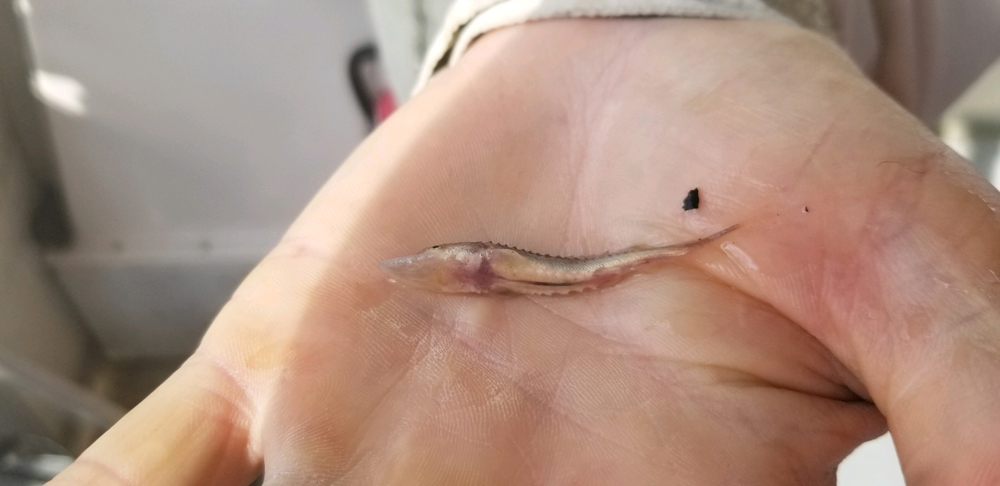Juvenile Atlantic Sturgeon confirm successful spawning but concerns remain
Last week, James River Association education staff discovered five young Atlantic sturgeon during an education program on the James River. On their 40-foot education boat, Spirit of the James, the staff were conducting their normal fish trawling survey, which typically brings up blue catfish, white perch and hogchokers. “As we started taking fish out of the trawl net, I knew right away that we had found something special,” said educator Aaron Bouchard. Captain Buddy Noland, born and raised in the Hopewell area, remarked that he had never seen a sturgeon up close before and “This is an exceptional find”. The sturgeon were no more than 5cm long and estimated to be only a few weeks old. The sturgeon were immediately returned to the river and swam away safely.
Sturgeon have played an important role in the James River for centuries. According to legend, riding a sturgeon was a rite of passage for young Native American men. In 1609 Captain John Smith wrote of the Jamestowne Colony, “We had more sturgeon than could be devoured by dog and man.” The Chesapeake Bay’s largest and oldest fish was abundant in the waters of the James during European colonization, but by the dawn of the 20th century the sturgeon population had nearly collapsed due to overharvest, loss of habitat, and pollution. Atlantic sturgeon are still rare in the Chesapeake Bay watershed, and today they are a federally protected endangered species.
Atlantic sturgeon complete incredible spawning migrations each spring and fall, moving from coastal salt water habitat to freshwater rivers and facing numerous modern challenges along their journey. Research has shown that vessel collisions kill many adult sturgeon annually, and water intakes that pull in river water for industrial purposes destroy eggs or embryos before young sturgeon have a chance to mature. There is also concern that non-native fish like blue catfish, which have increased in population since they were introduced in the 1970’s, may be feeding on young sturgeon in the river.
Juvenile sturgeon have been very scarce in the James River, but new and encouraging discoveries are continuing to happen. Last fall VCU researchers documented the first two juvenile sturgeon discovered in the James River in more than a decade. Finding young sturgeon that are too small to have migrated from a different river is incredibly important proof of successful spawning in the James River – a sign of positive momentum for the species.
In recent years there have been more and more reports of river-goers seeing adult sturgeon leap, or breach, out of the water in places like downtown Richmond. “To witness these enormous and prehistoric fish jump completely out of the water is quite a thrill,” said Jamie Brunkow, James Riverkeeper for the James River Association. “A breach may only last a second, but each one is a sign that the sturgeon population is making a comeback, and that the river’s health is improving.”

